How AI Revolutionizes Your Marketing Strategy
AI has become an invaluable tool for digital marketers, saving time and money. AI algorithms can process large amounts of data, analyze patterns, and make predictions based on what they’ve learned in the past. This ability enables businesses to optimize their marketing campaigns and boost conversions.
Consequently, companies across various industries have recognized the importance of AI in refining their marketing strategies. AI promises a future filled with opportunities. According to a study conducted by PwC, AI is estimated to contribute $15.7 trillion to the global economy by 2030. Moreover, the report reveals the top five benefits of AI, with the majority of companies stating that AI significantly enhances their customer experience.

Source: PwC
Application of AI in Marketing
AI can be seamlessly incorporated into different marketing initiatives, thereby helping companies achieve their goals with higher accuracy.
It enables businesses to blend advanced technology with human creativity to engage customers through personalized, relevant, and hyper-targeted communications.
Here are various approaches for applying AI in marketing and how it can amplify your marketing strategy:
More Effective Segmentation and Personalization
Using its data-driven algorithms, AI simplifies the process of identifying and creating accurate customer segments.
These segments can include geographic, demographic, firmographic, and behavioral attributes.
Geographic data, such as country of residence, city, state, and region, are types of explicit data that customers primarily provide on forms.
Demographic and firmographic data, other types of explicit data, are collected from potential customers and prospects. These include age, marital status, average monthly income, company size, and revenue.
Behavioral data are implicit data collected throughout a customer’s interaction with your brand, encompassing a range of activities such as website page visits, content views, ebook/whitepaper downloads, average order value, email activity, and engagement.
AI-powered tools need these data to analyze and generate optimized customer segments and audiences. What distinguishes AI-based segmentation from traditional segmentation is not only the heightened accuracy and time-saving but also the ability to engage customers with personalized messages and provide targeted recommendations for products and services based on customers’ behaviors and activities.
For example, Netflix uses AI to suggest movies that customers may be interested in, based on their previous interests and engagement patterns.

Faster Content Generation
AI-powered content tools make content creators’ work more efficient by providing ready-made articles that seem as though they were written by humans, and this is in a matter of seconds.
Several AI tools have made this possible, and the most common model that OpenAI has created is ChatGPT. Content marketers simply need to specify details such as headlines and descriptions, and the model will automatically generate the article for them.
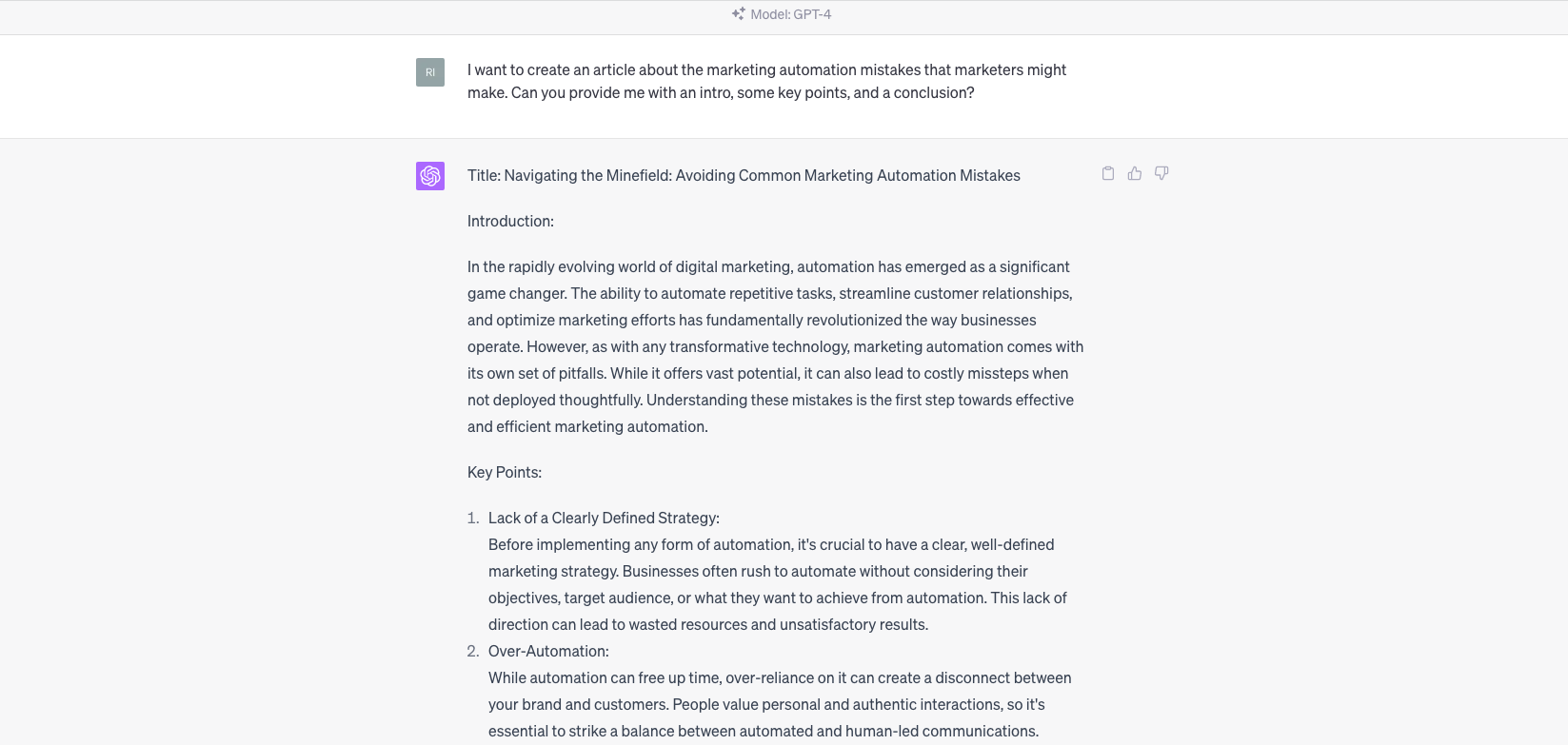
This isn’t only limited to articles but also extends to landing pages, automated messages like emails and SMS, social media posts, and ad copies.
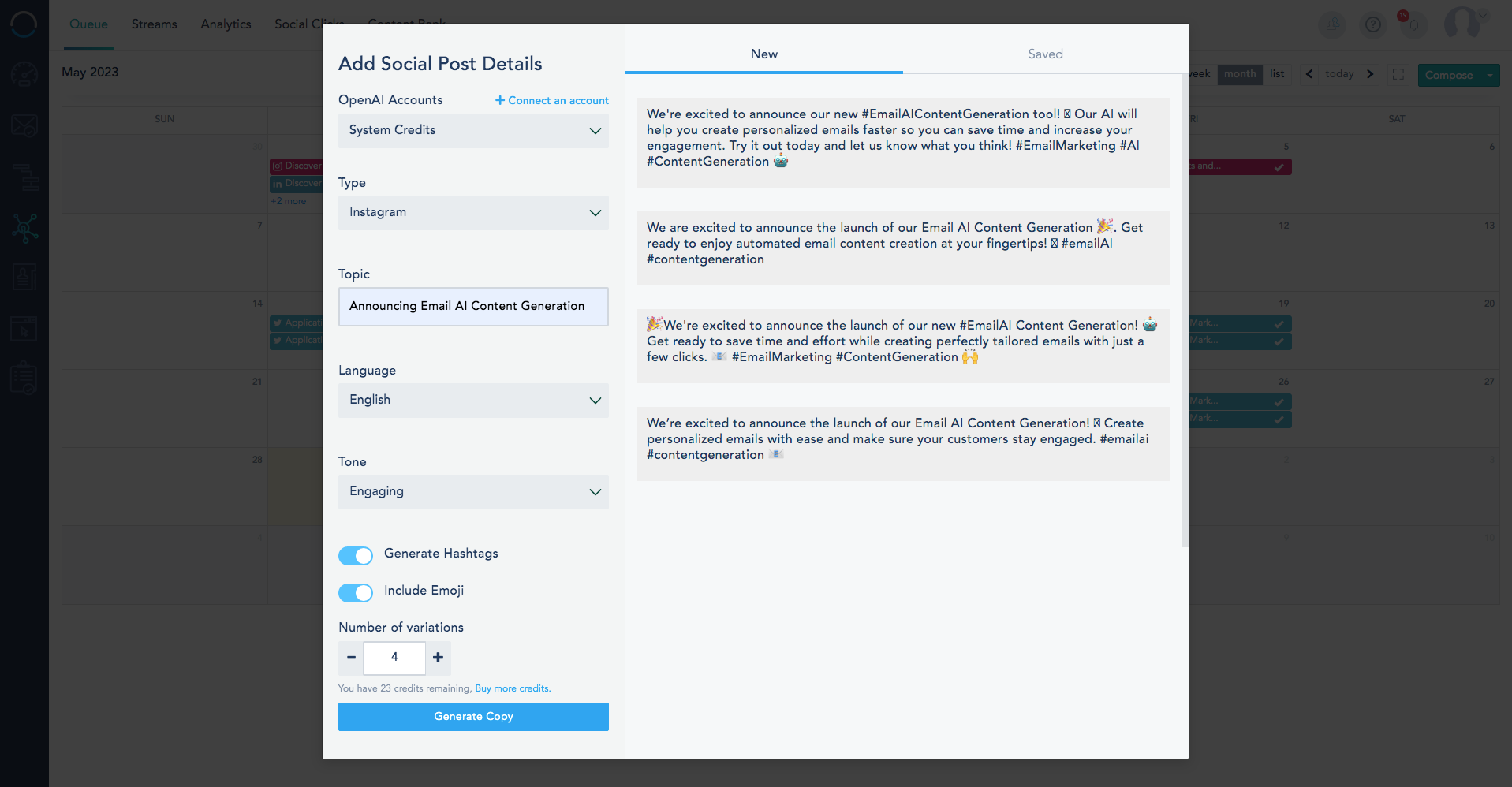 While this saves content writers considerable time and improves content quality, it shouldn’t completely replace humans as their critical thinking and common sense add value, reflecting the genuine manual effort behind the work.
While this saves content writers considerable time and improves content quality, it shouldn’t completely replace humans as their critical thinking and common sense add value, reflecting the genuine manual effort behind the work.
Better Customer Engagement and Retention
AI-powered tools use predictive analytics to gauge customers’ likelihood to engage with your brand. This applies, for instance, to email marketing in a feature known as predictive email sending. The feature analyzes vast amounts of past engagement metric data such as open rates and click-through rates and sends future emails at days and times when customers are likely to be active.
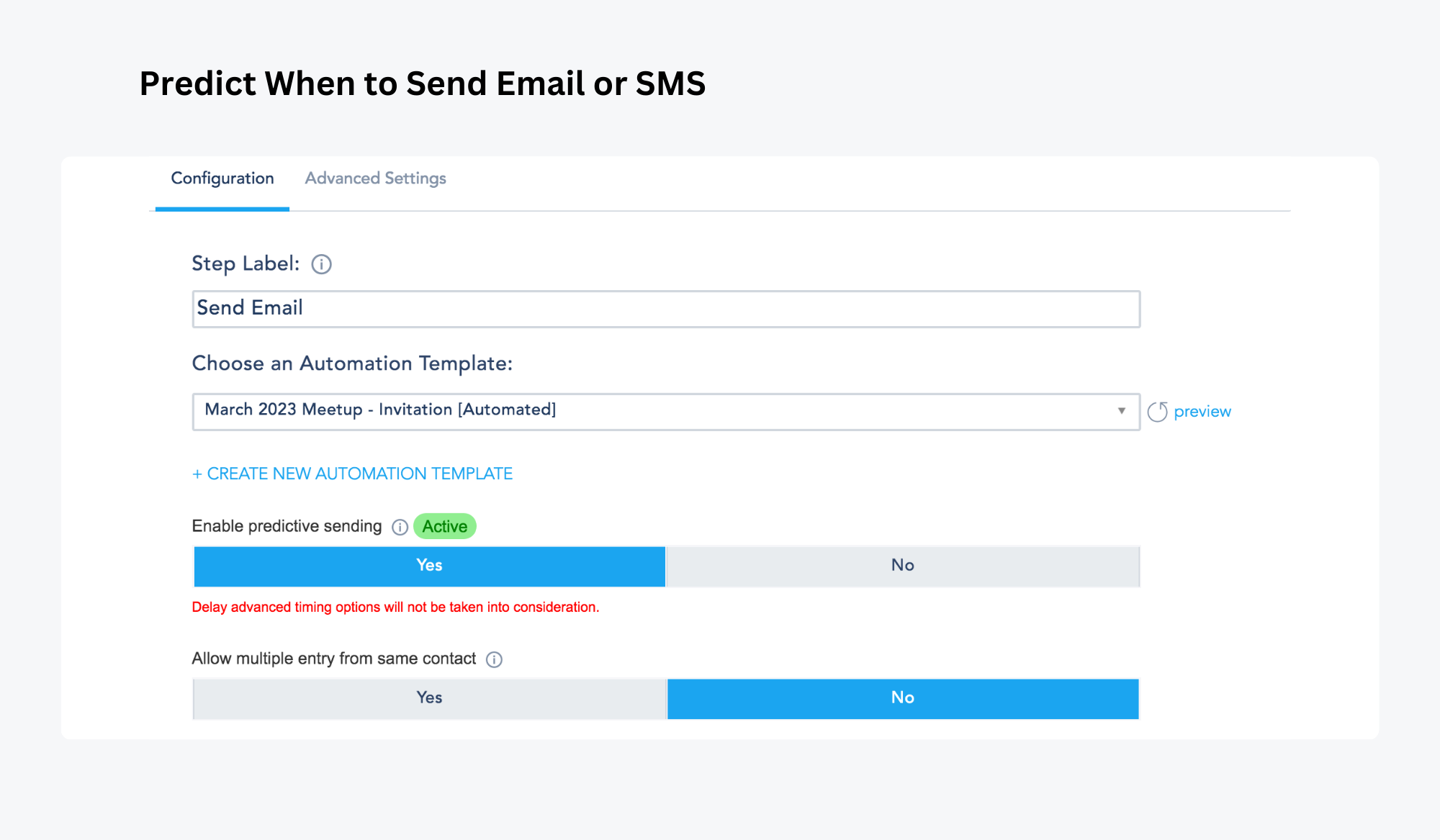
Additionally, these AI-based platforms can determine the churn potential for each lead based on specific behaviors. They gather previous data such as when they stopped using the product, how frequently they are engaging with your brand, and the dates of their first/last engagement. They use these data to pinpoint the churning stage.
The stages of churning include:
- Quick-churn customers: These are customers who tend to stop using the product shortly after their first use and can be difficult to re-engage.
- Late-churn customers: These are customers who have maintained a long-term relationship with your business and can be enticed to continue using your product or service.
When combined with smart content creation, digital marketers can communicate with their customers using more relevant and personalized messages, leading to increased engagement rates, higher customer lifetime value, and profits.
Smarter AI Chatbots and Virtual Assistants
AI-powered chatbots can handle customer requests 24/7, providing immediate assistance and enhancing customer satisfaction. They can process multiple queries simultaneously, freeing up your employees to focus on more complex tasks.
Moreover, the strength of AI-automated bots lies in their ability to provide personalized responses that human customer service representatives may not be capable of in certain situations. Markus Lippus, a CTO at MindTitan, a company whose primary focus is developing AI-powered solutions, states that chatbots, having access to millions of customer data points, are capable of compiling location-specific requests to identify patterns, spot recurring issues, and predicting specific customer’s problems.
By providing prompt and accurate support, AI chatbots can help build trust with your audience and foster customer loyalty. Chatbots can be used in various areas such as direct customer support, sales, onboarding tasks, and FAQs.
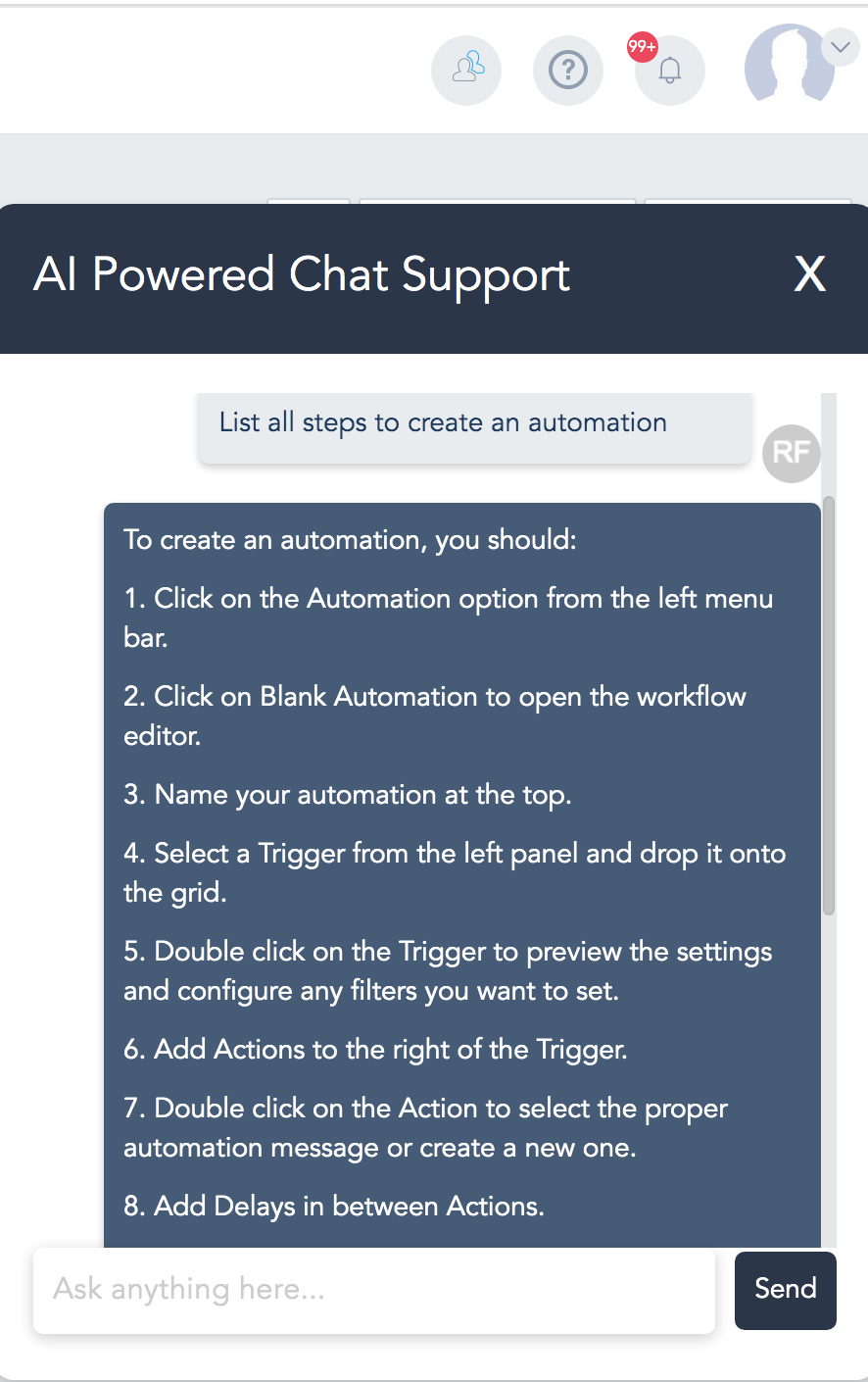
Enhanced PPC Advertising
Artificial intelligence and machine learning offer several benefits for advertising professionals. The results that advertisers gain include improved ad targeting, increased ad relevance, better ad placement, enhanced ad copy, and automated bid management.
Improved ad targeting
Before the introduction of AI, marketers had to spend time analyzing their target audience’s demographics, behavior, and interests to determine the most relevant audience to be targeted with suitable ads. Now, AI-powered tools can create these audiences more accurately and efficiently.
Increased ad relevance
Machine learning analyzes lead behavior and provides search keywords that your target audience tends to use to find your ads. This can increase the click-through rate and conversion rate of your ads by bidding on the most relevant search queries and phrases.
Better ad placement
AI algorithms can analyze data to identify the platforms and even the specific times of day when your target audience is most likely to engage with ads, helping to optimize ad placement.
Enhanced ad copy
Generative AI tools use advanced algorithms and natural language processing techniques to produce high-quality, engaging ad texts in seconds that grab leads’ attention and drive conversions.
Automated Bid Management
AI-powered bidding tools replace the manual bidding process that requires marketers to manually select the most likely to convert keywords and place pricing bids on them. These tools automate the process of adjusting bids based on keywords. These dynamic improvements enhance the ad campaign’s ROI and increase its effectiveness.
More Effective Social Media Management
A recent AI trend in social media is sentiment analysis, which allows companies to improve their relationships with their followers across social media channels by analyzing their emotions and opinions and categorizing them as positive, negative, or neutral.
Sentiment analysis involves two main components in AI: Natural Language Processing (NLP), which makes human language easily understood by machines, and Machine Learning (ML), which analyzes data patterns and makes predictions.
This approach allows companies to detect customer feedback and take appropriate actions before problems arise, potentially damaging your company’s image and reputation.
For example, social media marketers can use sentiment analysis tools or AI-powered marketing platforms that provide such a feature. They can program replies to customer comments based on their emotions.
- If the answer is positive -> Reply with X
- If the answer is negative-> Respond with Y
- If the answer is neutral-> Answer with Z
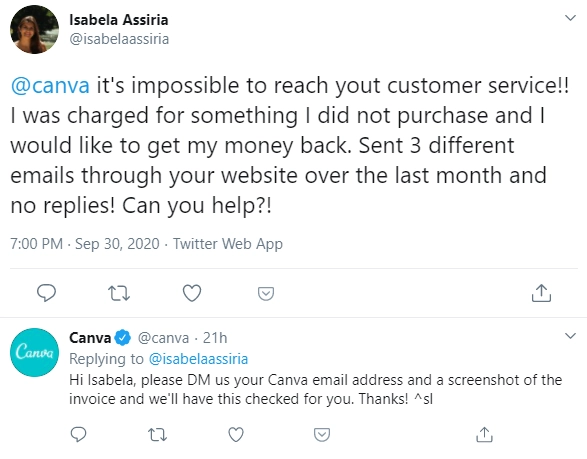
Source: MonkeyLearn
It’s important to note that sentiment analysis also applies to email marketing as well, where marketers can detect the intent of their customers’ replies to their automated emails or SMS messages and respond accordingly.
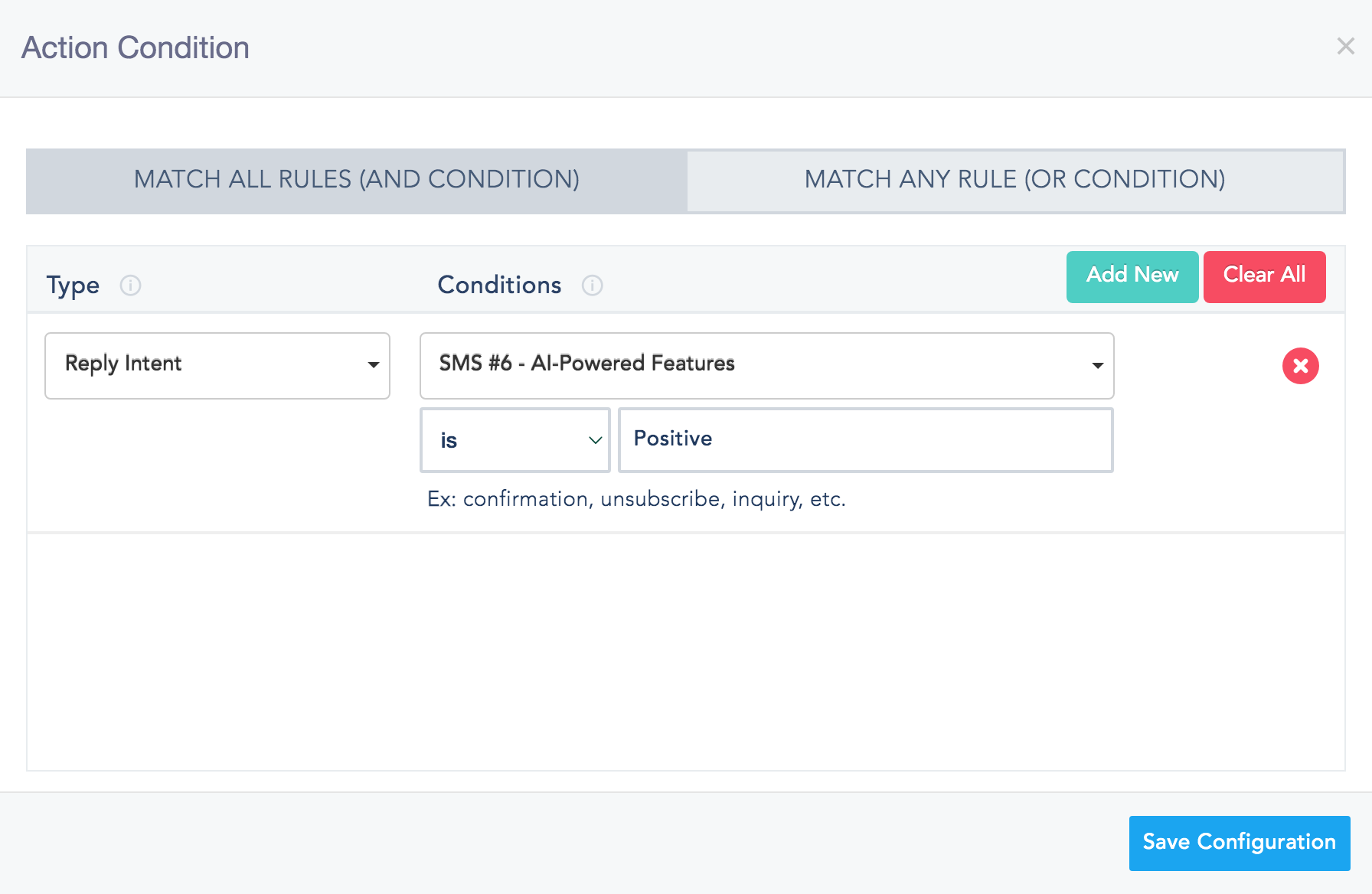
Moreover, based on customers’ replies to automated messages, marketers can leverage marketing automation platforms to build their workflow automation by creating a series of automated sections corresponding to the main trigger, such as “Replied SMS” that’s shown in the image below.
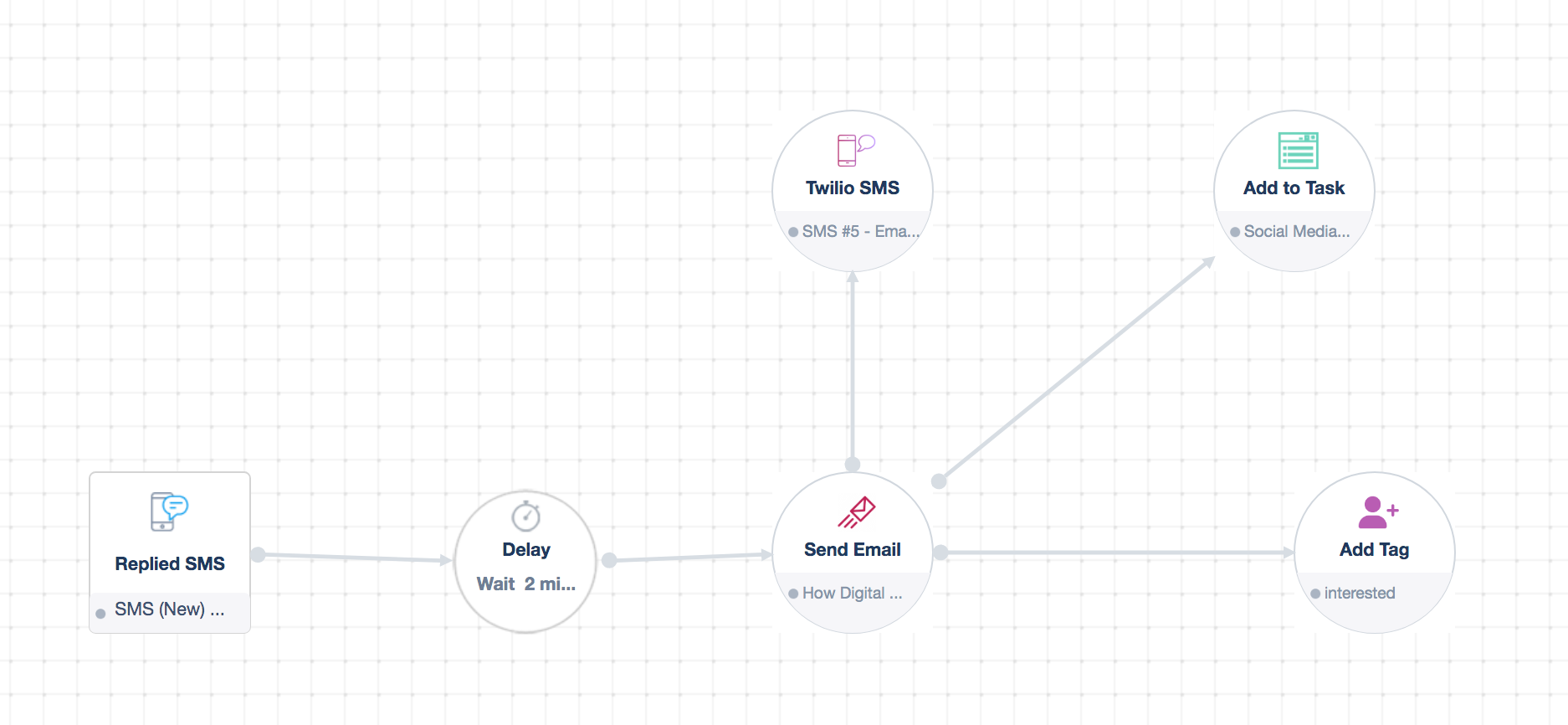
Wrapping Up
The impact of AI on the digital marketing landscape is undeniable. The examples discussed above highlight several areas where businesses can leverage AI to enhance their marketing strategy. However, it’s crucial to remember that AI can be utilized in other initiatives such as SEO, voice search, image recognition, lead scoring, and many others.
Many marketing platforms have been emphasizing AI-based features to ease the work of marketers, saving them time and money, while boosting their sales and enhancing relationships with their clients. In this rapidly evolving digital age, the intelligent application of AI in marketing has become not just an option, but a necessity for businesses seeking to gain a competitive edge.
While AI’s ability to automate tasks, analyze large data sets, and predict customer behavior is transforming marketing, human intuition, creativity, and strategic thinking remain essential. The most successful marketing strategies will be those that balance the strengths of AI with the unique capabilities that only humans can bring. By harnessing AI’s potential while valuing human skills, businesses can create more effective, personalized, and engaging marketing campaigns that resonate with their audiences and drive growth.









